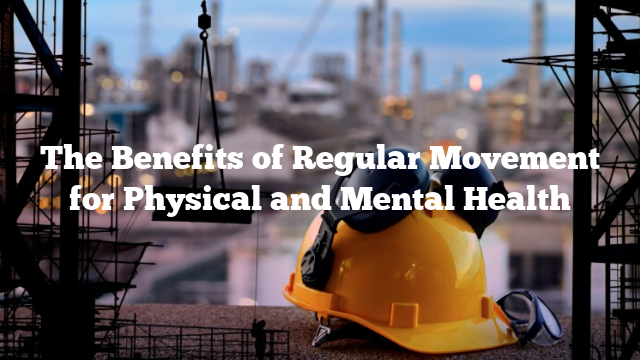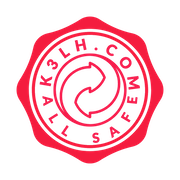Movement: The Key to a Healthy Life
Do you ever feel like you’re stuck in a rut? Does your body ache after a long day at work? Do you find yourself feeling lethargic and unmotivated? If you answered yes to any of these questions, then you may be in need of some movement in your life. Movement is not just about exercise, it’s about finding ways to incorporate physical activity into your daily routine.
In this blog post, we will explore the benefits of movement, the different types of movement, and provide you with tips and tutorials on how to incorporate more movement into your life. So, let’s get moving!
What is Movement?
Movement is any physical activity that requires energy and effort from your body. It can range from simple tasks like walking to more complex activities like dancing or playing sports. Movement is essential for maintaining a healthy body and mind. It can help improve your mood, increase your energy levels, and reduce stress and anxiety.
Why is Movement Important?
There are numerous benefits to incorporating movement into your daily routine. Some of the most significant benefits include:
– Improved cardiovascular health
– Increased muscle strength and flexibility
– Reduced risk of chronic diseases
– Improved mental health and mood
– Increased energy levels
– Improved sleep
Facts About Movement
– According to the World Health Organization, adults should engage in at least 150 minutes of moderate-intensity physical activity every week.
– Sitting for long periods of time has been linked to an increased risk of chronic diseases such as heart disease and diabetes.
– Regular physical activity can help improve cognitive function and reduce the risk of dementia.
Tutorial of Movement
One of the easiest ways to incorporate more movement into your daily routine is by walking. Walking is a low-impact exercise that can be done anywhere, at any time. Here’s a simple tutorial on how to get started:
1. Start with a warm-up: Before you begin your walk, take a few minutes to stretch your muscles and get your blood flowing.
2. Choose your route: Pick a route that is safe and enjoyable. This could be a walk around your neighborhood, a local park, or a nature trail.
3. Set a pace: Start with a comfortable pace and gradually increase your speed as you become more comfortable.
4. Track your progress: Use a fitness tracker or app to monitor your steps and distance. This can help keep you motivated and track your progress over time.
Tips of Movement
Here are some tips to help you incorporate more movement into your daily routine:
– Take the stairs instead of the elevator
– Park farther away from your destination
– Take a walk during your lunch break
– Try a new physical activity, like yoga or dance
– Set a daily step goal and track your progress
Question and Answer of Movement
Q: Is it better to exercise in the morning or evening?
A: The best time to exercise is whenever it works best for you. Some people prefer to exercise in the morning to start their day off on the right foot, while others prefer to exercise in the evening to relieve stress after a long day.
Q: How much movement do I need to see results?
A: Any amount of movement is better than none, but for optimal health benefits, adults should engage in at least 150 minutes of moderate-intensity physical activity every week.
Q: Can movement reduce the risk of chronic diseases?
A: Yes, regular physical activity has been shown to reduce the risk of chronic diseases such as heart disease, diabetes, and certain types of cancer.
Q: Is it possible to get too much movement?
A: While movement is essential for maintaining a healthy body and mind, it is possible to overdo it. It’s important to listen to your body and give yourself time to rest and recover as needed.
Conclusion of Movement
Incorporating more movement into your daily routine is essential for maintaining a healthy body and mind. Whether it’s a simple walk around the block or a more complex physical activity like cycling or swimming, finding ways to move your body can have significant benefits. So, get up, get moving, and start living your best life!
Recommendations:
- Public Safety Pictures If you're looking for public safety pictures images information linked to the public safety pictures interest, you have pay a visit to the ideal blog. Our site frequently provides you…
- Health And Safety Inspection Report Template Use for office health and safety audits. Add a badge to your website or intranet so your workers can quickly find answers to their health and safety questions. Safety Report…
- Safety Plan Worksheet Adolescents Department of psychiatry human behavior division of child adolescent psychiatry star center conference march 19 2012 king of prussia pa. This safety plan comes with several phone numbers for suicide…
- Safety Inspection Report Template In line with this we have here safety report templates that you can download and use. Neglecting such reports could bring out legal and administrative consequences. Safety Report Templates 16…
- Safety Plan Worksheet For Addiction It is important that the safety plan worksheet is completed with the therapist and patient working together. Psych and the organization carmha and simon fraser university see link welcome to…
- Safety Vest Equestrian Best horse riding body protectors of 2019 equestrian protective vests safety vests do i need a horse riding body protector. Safety vests or protective riding vests are a piece of…
- Huge Safety Slogans Complete List Made Your Safety… Browse through the safety slogans in 2022 suggestions below. The safety slogans is one of Safety Communication method which successful of safety campaign was measured. So Safety Slogans is so…
- The Power of Movement: How Physical Activity… Movement: The Key to a Healthy Body and Mind Have you ever felt the stiffness in your body after sitting for hours in front of your computer? Do you experience…
- Images Of Safety Protocols If you're searching for images of safety protocols images information connected with to the images of safety protocols topic, you have visit the ideal site. Our website frequently provides you…
- Safety Harness Inspection Checklist Uk Formal and comprehensive harness inspection before first use and at least every 6 months thereafter. Sample inspection form fall protection equipment safety harness. Harness Safety Inspection Check Book How do…
- Safety Planning Intervention Template The safety planning intervention for suicide prevention is a free online course from the new york state office of mental health and columbia university designed for education and training of…
- Safety Inspection Ontario Checklist Its one of the things on our car safety inspection checklist and well want to fix it before your car can pass a safety inspection. If yes is there a…
- The Power of Movement: How Exercise Can Change Your Life Movement: The Key to a Healthy Lifestyle Movement is an essential aspect of a healthy lifestyle. It is the ability to move your body freely without any discomfort or pain.…
- The Power of Movement: How Exercise Impacts Your… Introduction Movement is a fundamental aspect of human life that we often take for granted. From walking and running to dancing and playing sports, movement enables us to express ourselves,…
- Seatbelt Image If you're searching for seatbelt image pictures information related to the seatbelt image interest, you have come to the right site. Our website always gives you suggestions for refferencing the…
- Safety Committee Images If you're searching for safety committee images images information linked to the safety committee images topic, you have visit the right site. Our site frequently provides you with suggestions for…
- The Power of Movement: How Exercise Can Improve Your… Movement: The Key to a Healthy Life Are you feeling lethargic and unmotivated lately? Do you struggle with joint pains and muscle stiffness? If yes, then you are not alone.…
- Keeping Safe Images If you're looking for keeping safe images pictures information linked to the keeping safe images interest, you have pay a visit to the right blog. Our website frequently provides you…
- Safe And Healthy Images If you're looking for safe and healthy images images information connected with to the safe and healthy images keyword, you have visit the right blog. Our site frequently provides you…
- Health And Safety Inspection Form Safety inspections are essential to ensuring and effective safety program. More about download the free osh answers app. Workplace Health And Safety Inspection Forms Survey Templates And Alternatively they may…
- Safety Vest Horseback Riding The bottom arc shape design allows more p. Or maybe not how tight can you turn what is high centering and other trailering debacles. Amazon Com Monkeyjack Equestrian Horse Riding…
- Hazard And Risk Images If you're searching for hazard and risk images images information linked to the hazard and risk images keyword, you have come to the ideal site. Our site frequently gives you…
- Safety Data Sheet Images If you're searching for safety data sheet images images information related to the safety data sheet images keyword, you have come to the right blog. Our website always gives you…
- Fire And Safety Pictures If you're searching for fire and safety pictures pictures information related to the fire and safety pictures interest, you have visit the right site. Our site always gives you hints…
- Environmental Safety Images If you're searching for environmental safety images pictures information linked to the environmental safety images topic, you have visit the right site. Our website frequently provides you with suggestions for…
- Unsafe Work Photos If you're looking for unsafe work photos images information related to the unsafe work photos topic, you have come to the ideal site. Our website frequently provides you with suggestions…
- Picture Of Seat Belt If you're looking for picture of seat belt pictures information related to the picture of seat belt topic, you have come to the right blog. Our site frequently gives you…
- National Safety Day Photos If you're looking for national safety day photos pictures information linked to the national safety day photos topic, you have come to the right blog. Our site frequently provides you…
- Family Safety Images If you're searching for family safety images images information related to the family safety images interest, you have pay a visit to the right blog. Our site frequently provides you…
- Safe Lifting Images If you're looking for safe lifting images images information related to the safe lifting images interest, you have pay a visit to the ideal blog. Our website always gives you…
Advertisement
Scroll to Continue With Content




